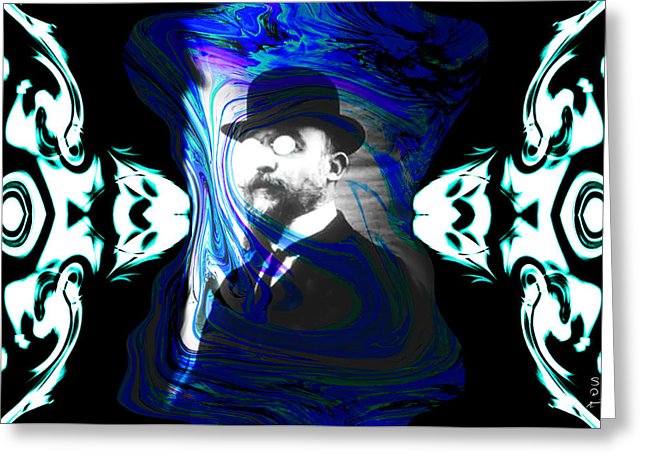The Maestro’s Corner: Velvet Gentleman
The Curious Works of Erik Satie
Gymnopédie No.1 – Erik Satie – (1888)
November 27, 2016
Picture this: You’re wandering through the streets of Paris after a rainstorm, observing leaves drift across puddles and watching the wind blow the clouds away. As you cross the Avenue de Champs-Élysées, the sound of a piano drifts down from an open apartment window, and you stop to listen. The captivating, atonal melody echoes across the deserted street and floats into the empty sky. You don’t recognize the melody, so you go home and troll YouTube until you find it. It’s Gymnopédie No.1, by the French composer Erik Satie.
During his lifetime (1866-1925), Satie was famous for many things: his talents as a cabaret pianist, his avant-garde musical compositions, his eccentricity, and his dressing habits. In 1895, as a poor but ambitious twenty-nine-year-old musician, Satie purchased seven identical grey velvet suits. He wore one of them every day for the rest of his life. As he strolled to and from his various occupations in Paris, children would follow him around, enchanted by the peculiar man; due to his immaculate grooming and attire, they took to calling him the Velvet Gentleman – and the name stuck. Satie carried an umbrella everywhere, even when it did not rain. He used his umbrellas to shield his face from the sun, but would close them when it rained, fearful of ruining them (after his death, his friends discovered dozens of umbrellas stashed away in his room). His room, a dirty hovel that contrasted sharply with its well-groomed owner, also sported an interesting feature of furnishing: two grand pianos somehow stacked on top of the other. Satie only played the bottom one – the top piano was used as a cubby to store letters and parcels.
Certainly, Satie was a most eccentric man. However, it was this eccentricity, and a willingness to look at things from an abstract perspective, that allowed him to write the mysterious and dreamy pieces he is known for today. Satie’s Gymnopédies and Gnossiennes – his most famous pieces – are meditative and experimental. In them, Satie employs repetitions and tone changes that reflect modern music much more than they did the tunes of his time. As a member of the Paris artistic avant-garde, Satie found the support he needed to experiment in music and blaze new trails in melodic mystery. His music is peaceful yet haunting, dreamlike yet disturbing. Satie’s works served as a major bridge to the next era of artistic evolution – the era of surrealism and minimalism. He was composing at the turn of the century, and during his lifetime the horrors of World War I – The Great War, as it was called then – were changing how people viewed everything, from life and love to art and religion. Satie’s break from tradition was one of the earliest in a wave that would soon overtake not only Paris, but the rest of the art world, encompassing the strange and evocative works of artists like Arnold Schoenberg, Pablo Picasso, and Salvador Dali. The world was moving towards a modern era.



